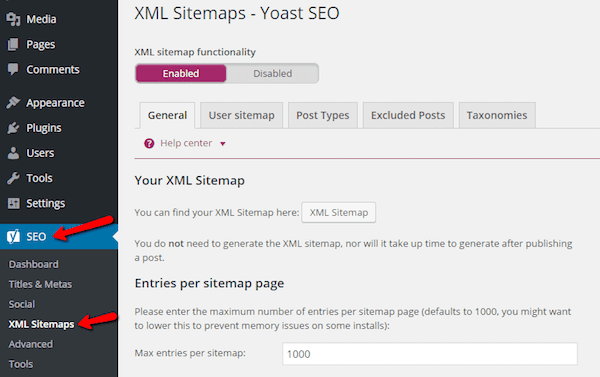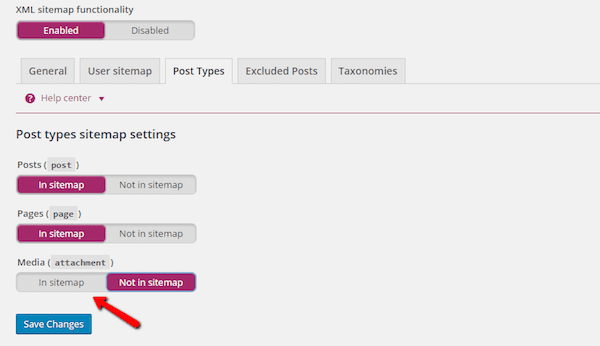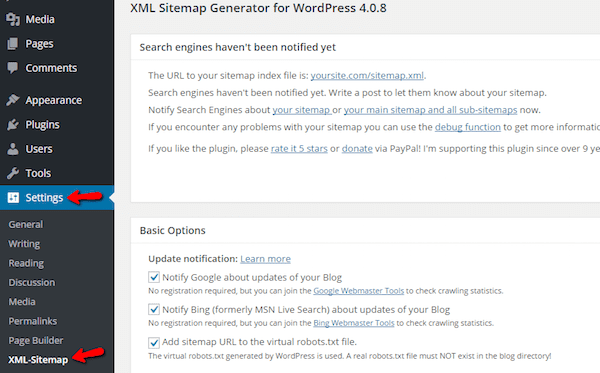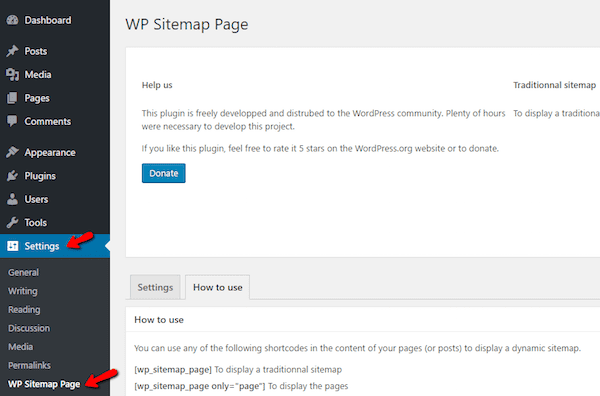No matter how great at navigating you are, it always helps to have a map telling you where everything is, right? Well, it’s the same with search engines. They’re able to crawl your site by themselves, but you can make it a heckuva lot easier for them by creating something called a sitemap.
Essentially, sitemaps tell search engines like Google and Bing how your site is structured. This way, they can crawl and index your site more efficiently. They’re an essential part of your SEO strategy. And in this post, I’ll tell you why and how you can set up your sitemap for WordPress.
What Sitemaps Are and How They Help
To explain what a sitemap is, it helps to have a very basic understanding of how search engines index the web. Essentially, search engines send out robots called crawlers that follow links around the Internet. Each time they find a new link, the crawler will index that new page (of course, directives like noindex and nofollow can always alter this behavior). And from then on, people searching in Google or other search engines can see that page in the search results.
Sitemaps expedite this process by providing search engine robots with a detailed map of your site. Instead of having to crawl your site manually by finding internal links to all your content, the crawler can instantly know where every public page in your website is located.
While by no means a magic bullet for SEO, sitemaps will improve the indexing of your site. And that means it’s more likely that all your posts and pages get included in search results.
They also allow you to provide search engines with optional information like when a page was last updated, how often a page changes, and how important a page is. This information can further help search engines optimize how they crawl your site.
XML vs HTML Sitemaps
XML sitemaps are the most common implementation. They’re exactly what I discussed above – a map dedicated almost entirely to search engines. Their data isn’t really useful to humans, so the only reason to create one is to boost your indexing.
HTML sitemaps, on the other hand, can be used by both humans and search engines. It’s an actual page on your website where humans and search engines can get a high-level overview of all the content your site offers. Search engines can still crawl this page, but it also gives some curious visitors a better user experience.
So which type should you use?
The answer is BOTH. It’s not an either/or question. They don’t conflict and both types offer benefits. If you don’t believe me, check out former Google SEO guru Matt Cutts talking about why you should include both XML and HTML sitemaps:
How to Create an XML Sitemap with WordPress
Given the popularity of SEO plugins, there’s a good chance you already have all the necessary functionality to create an XML sitemap. If you use Yoast SEO, All in One SEO, or SEOPressor, you just need to find the relevant plugin setting to set up your XML sitemap.
For example, with Yoast SEO you just need to navigate to SEO → XML Sitemaps to enable and configure it:

One nice feature with Yoast SEO’s sitemap tool is the ability to include media attachments in your XML sitemap:

When enabled, this can boost your traffic from Image Search by increasing the indexing of your media uploads.
Creating an XML sitemap is similar with All in One SEO, just navigate to All in One SEO → XML Sitemap:

Creating an XML Sitemap with Google XML Sitemaps
If you don’t have one of those plugins, or want additional control over your XML sitemap, you can also easily create one with the aptly named Google XML Sitemaps plugin. It’s free and available at the WordPress.org plugin repository.
After you install the plugin, you can configure it by going to Settings → XML-Sitemap:

Here’s what you’ll definitely want to configure on that page:
- Post priority: Set how you want to calculate posts’ crawling priorities. You can have the plugin automatically calculate priority by the number of comments, or manually set the priority later on.
- Sitemap content: Choose what types of content get included in your sitemap. For example, if you want to exclude category archives, you just need to uncheck that box.
- Change frequencies: Set how often each type of content gets changed. This gives search engines an idea of how to prioritize their crawling. For example, you’ll definitely want to set the page which displays your recent posts to be crawled daily.
- Priorities: Lets you set manual crawling priorities for different content. You definitely want your homepage and posts page (if different) to be high priority.
How to Create an HTML Sitemap with WordPress
To create an HTML sitemap, you’ll need to turn to a separate plugin right from the start. It’s called WP Sitemap Page and is also available for free at WordPress.org.
Once you install the plugin, you can customize it by going to Settings → WP Sitemap Page:

You can exclude certain post types, choose how post titles display, and choose whether or not to display posts multiple times if they appear in different categories.
Then, you can add your sitemap to any page via shortcode. The plugin includes plenty of custom shortcodes which allow you to do things like only display pages, tags, categories and more. You can also customize sorting options to have them display in the exact order you want.
It’s a good idea to place this shortcode in a page that’s accessible from your footer. That way, it’s easier for humans and search engines to find, but it doesn’t take up valuable primary menu space.
How to Tell Search Engines About Your XML Sitemap
Now that you’ve created your sitemaps, there’s one more thing you need to do:
Tell search engines exactly where they can find it.
By showing search engines where you keep your sitemap, you ensure they find it, which means they’ll know whenever you publish changes to it and your site.
To submit your sitemap to Google, you’ll need to sign up at Google Search Console(formerly called Google Webmaster Tools) and follow their instructions for submitting a sitemap.
The process is quite similar for submitting your sitemap to Bing. You’ll need to sign up at Bing Webmaster Tools and then submit your sitemap by following their directions.
Wrapping Up
Sitemaps are a quick and simple way to improve your WordPress site. Creating an XML sitemap will make it easier for search engines to crawl and index all of your content. And HTML sitemaps can similarly improve crawlability while also boosting the user experience for some users who prefer getting a bird’s eye view of your site.
At the very minimum, you should create an XML sitemap and submit it to Google and Bing. But if you have the time, I also encourage you to consider adding an HTML sitemap to cover all your bases.
Have you made a sitemap before? If so, what tools did you use?
Article thumbnail image by Aleksey Vanin / shutterstock.com









0 comments:
Post a Comment